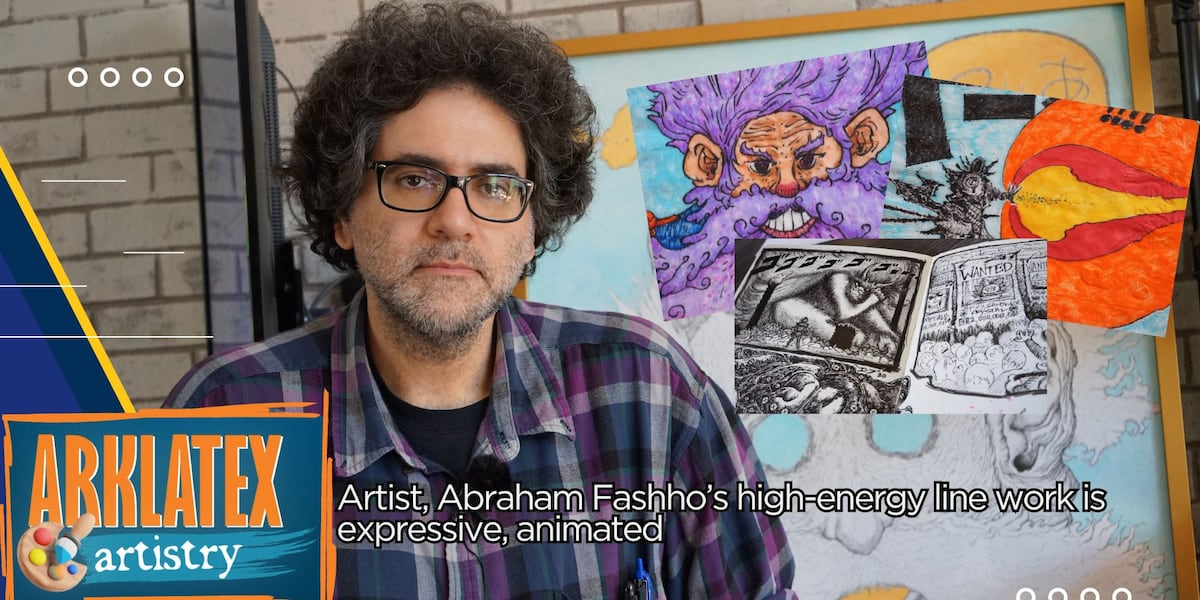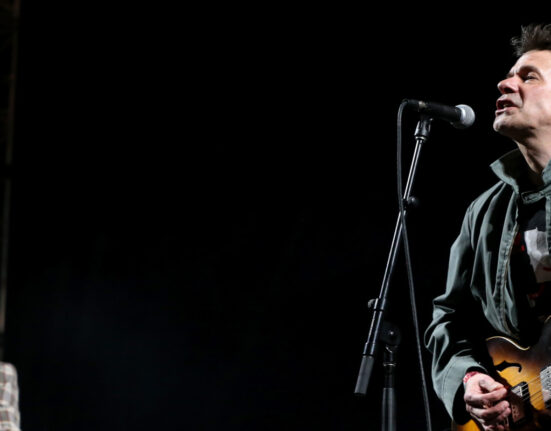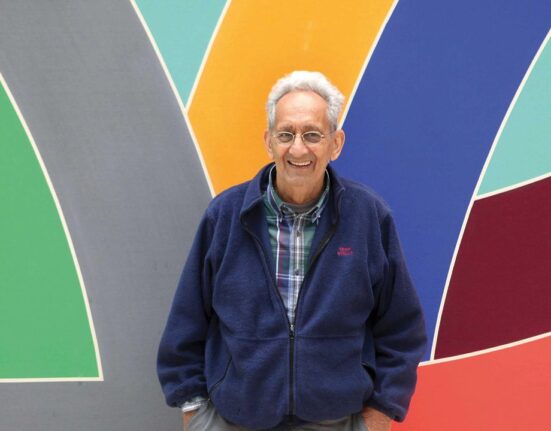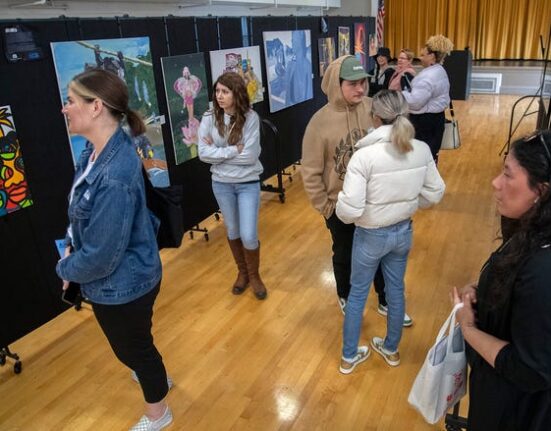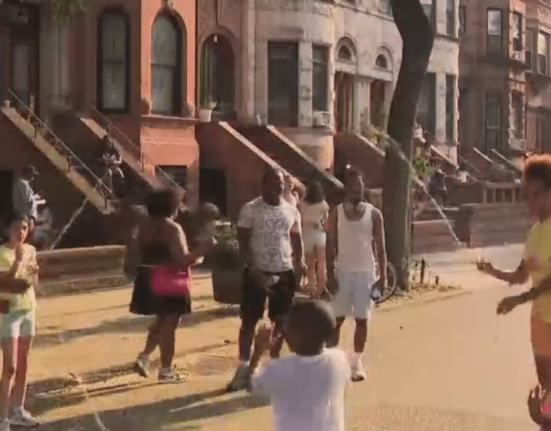SHREVEPORT, La. (KSLA) – ArkLaTex Artistry takes an in-depth look at Shreveport sequential artist, Abraham Fashho, whose pen and ink art feels like it escapes its pages.
Abraham Fashho was born in Bossier City, Louisiana, but grew up all his life in Shreveport. When he was a child, Fashho also loved comic books and cartoons. Eventually, he discovered Japanese anime and manga, falling in love with the art. Once in college, he graduated from Savannah College of Art and Design (SCAD) and LSUS with degrees in communications, history, political science, and graphic design.
Fashho’s work is energetic and has a lot of action. When looking at it, the viewer’s eyes are captivated by all the little details in his characters. When looking over his art you almost feel like you are actively watching a scene in an animation, it comes to life within the viewer’s mind.
His mediums:
Fashho uses some digital methods to create art but primarily describes himself as a traditional artist, enjoying what he calls his bread and butter, pen and ink, pencil, brushes, and markers.
“It’s not like its a dying art or anything, that’s what I’m very comfortable with, that’s what I grew up with, it’s what I used a lot in school and everything,” Fashho explains why he’s most comfortable with traditional art tools. “I’m trying to get more comfortable with using digital.”
“Most the mediums I use are Micron pens, technical pens. I use brushes for inking. I use mechanical pencils, #2 pencils, anything that is a pencil I can draw with it. Any kind of piece of paper, I draw on it. Anything I can draw on, I do that,” Fashhoo explains his mediums.
He explains that he takes time on his drawings because they are traditional and mistakes aren’t easily corrected.

“The main thing that goes into that type of medium is that I can express and make different types of art. To me, I can take my time on it. The thing is there is also a finality to it if I make any mistakes and such,” Fashho says. “So, there is a more disciplined understanding. Like you have to do it correctly the first time or else it’s going to mess up and you are going to have to start all over again.”
When it comes to digital, Fashho likes to keep it as a tool in his toolbox, using it to get an idea of what colors he wants to use in his art by using it in combination with his traditional work. He explains that when making digital art there is what he calls “security”, which allows the artist can easily go back and correct mistakes, but Fashho still prefers traditional.
“I like that kind of dangerous moment, oh I made a wrong mark. I messed up here, I messed up there,” Fashho says. “But, like Bob Ross says happy mistakes. Having mistakes can lead to having something even more beautiful. I enjoy that process more.”
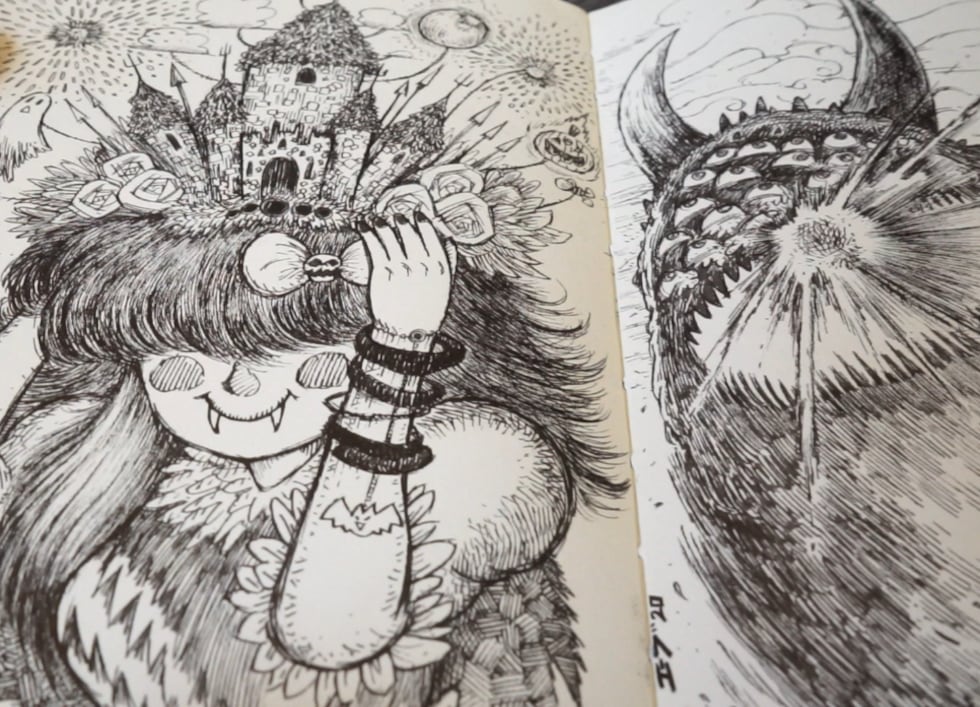
Where it started:
He has been an artist since a very young age, drawing a lot as a kid. Fashho recalls watching Saturday morning cartoons and taking a piece of paper, putting it on the screen, and attempting to draw Scooby Doo and Thundercats.
“I’ve always wanted to express myself creatively, I have a passion for it and it’s never stopped. I’ve always examined things closely and get impressed with like a blade of grass or a detail on a door, texture and stuff. It’s like that Leonardo Da Vinci rule, where you take your students out and make them look at a brick wall and you tell them, can you see something in the bricks? Can you see a face in the bricks? Can you see like a landscape in the bricks? And, you would examine the things that give you a picture”, Fashho explains. “That’s how it was for me as a kid. I didn’t understand it until I got older and my brain developed towards that kind of understanding,” explains Fashho. “Like, oh this is what perspective is, this is what composition is, and this is what illustrative narrative is.”
As a child, he was always looking at art in comic books, movies, and animation. He would watch movies over and over again without getting tired of them, even now, because of how much he appreciates the art behind them.
“That’s my imagination. It’s always vivid, it’s always active,” says Fashho. “It started as a kid, and it’s still going on. I’m holding onto it as much as I can because when you get older you lose that kinda child-like innocence of looking at something and appreciating it in a sense. It disappears as you get older because that seriousness of life comes in.”
Fashho says that our creativity as a child is like a deep well, but eventually, that well can dry up. That doesn’t mean that it’s the end of the person’s creativity, however, Fashho believes that we can find another well and reawaken it within ourselves.
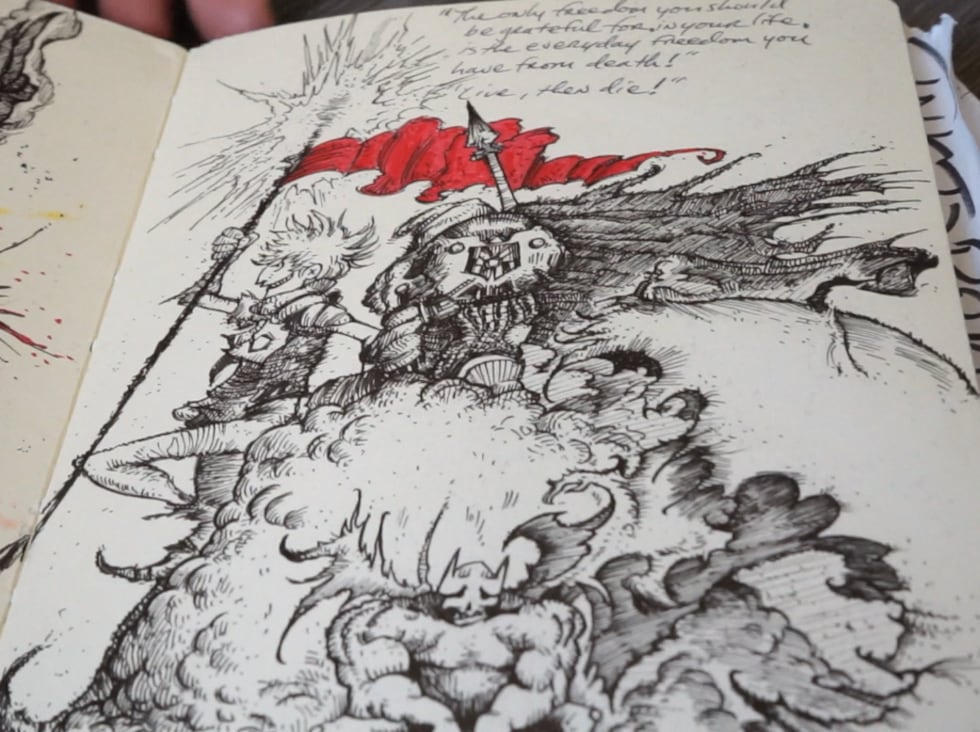
His style:
As he got older he took influences from Japanese and other comic artists from across the world, all of it helped shape his appreciation for different kinds of art and his own personal style.
“I like seeing a line that is not clean. I like seeing a very sketchy line because it tells me the artist is still thinking of where they want something to go. It also feels kinda animated too. It kinda feels like the drawing will kinda leap out at you like it’s got this kind of energy and passion to it. I’m not saying that I don’t look at any of the art that has clean line work and stuff, it’s just that is what gets me going when I look at that kind of stuff. I love seeing that kind of impressionistic art style that goes into comic art,” says Fashho. “Picasso said good artists borrow, great artists steal. I don’t want to borrow too much. I want to express my stuff in my own way. I want my art to be very expressive using the line,” explains Fashho.
A big influence in Fashho’s life was animator, Chuck Jones, who did the Tom and Jerry cartoons and created many other Looney Tunes.
“Chuck Jones, honestly, his art style, I love it. Its very clean but his art style is incredibly expressive,” explains Fashho.
One specific cartoon Jones created, The Dot and The Line – A Romance in Lower Mathematics, heavily inspired Fashho’s work today. The story is told with basic geometry and is animated in a way that captivates, despite the main characters being a simple line, a dot, and a squiggle. The line overcomes and changes, becoming more, to win the heart of the dot.
“When I was a kid and I saw that, I said – I was thinking, wait if you can do all that stuff with a line, why am I holding myself back? So I started expressing my line the way I wanted too and my art got more free, a lot more interesting,” Fashho said.
Fashho’s characters are inspired by his experiences and everything he encounters each day, from patterns on shirts to the shape of a door. Anything can spark his inspiration at any given moment. Fashho’s recent Critical Mass 12 art piece was inspired by a stain in a coffee cup.
“I was just cleaning out a coffee cup and I just got – like lightning struck my brain,” Fashho describes the moment he was inspired to create his piece. “I went to my table and I just doodled it out on some post its and I had what I needed for my inspiration. Four days later I had a giant 30 x 40 piece.”
His advice:
“Be very happy that you have a talent, where you can look at something at 0% and go from zero to 100,” Fashho says. “You are a creator, think of yourself as a tiny god. Where you are making something out of nothing.”
Fashhoo quotes Game of Thrones, “The lion doesn’t concern himself with the opinions of the sheep”, he explains that there will be people out there who support the things that you do and who hate what you do because you are doing something different than they are.
“There is a lot of people who won’t get you, and there are people who absolutely get you and there is always a community of people who do that,” says Fashho. “Do your work and find the people who dig your stuff and let those people be your support as you grow as an artist.”
Fashho also reminds artists, you need something to make money. Art doesn’t produce money for artists, and you need an income for supplies, pay bills, and survive.
Don’t forget to stand out. Make art that you can’t find at Target. Develop a style that makes you recognizable as an artist.
“You have to make yourself a little bit unique, a little bit more grander than somebody that someone picks up at Target or Wal-Mart,” Fashho advises. “You need to be able to say, no that’s my art. Someone looks at it, that’s mine. People can look at a Picasso, know it is a Picasso. People can look at an Andy Warhol and know it’s an Andy Warhol. Someone could look at a Rembrandt and know it’s a Rembrandt. A pair of Nikeys say Nikey, but if you took the Nikey thing off of it, the swish, would you even freakin’ know?”
Be sure to follow Fashho on Facebook at https://www.facebook.com/kingbrrgrr, or on Instagram at https://www.instagram.com/kingbrrgrr/.
For more art-related stories and interviews by Brittney Hazelton, visit https://www.ksla.com/community/arklatex-artistry/ or https://www.ksla.com/video-gallery/community/arklatex-artistry/.
Copyright 2024 KSLA. All rights reserved.

